
Honey Bee Anatomy Ask A Biologist
Anatomy of the Honey Bee. Like all insects, the honey bee is made up of three major segments: head, thorax, and abdomen. As a member of the insect class (Insecta), honey bees share with other insects the following characteristics. Honey bees are segmented in nearly all their body parts: three segments of thorax, six visible segments of abdomen.

European Honey Bee Anatomy Digital Art by Alex Surcica
The wax produced by the bees is a complex mixture of various substances, including fatty acids, hydrocarbons, and esters. This mixture gives the wax its unique properties, making it both pliable and durable. The bees use the wax to construct the honeycomb, providing a structure for storing honey, pollen, and brood.
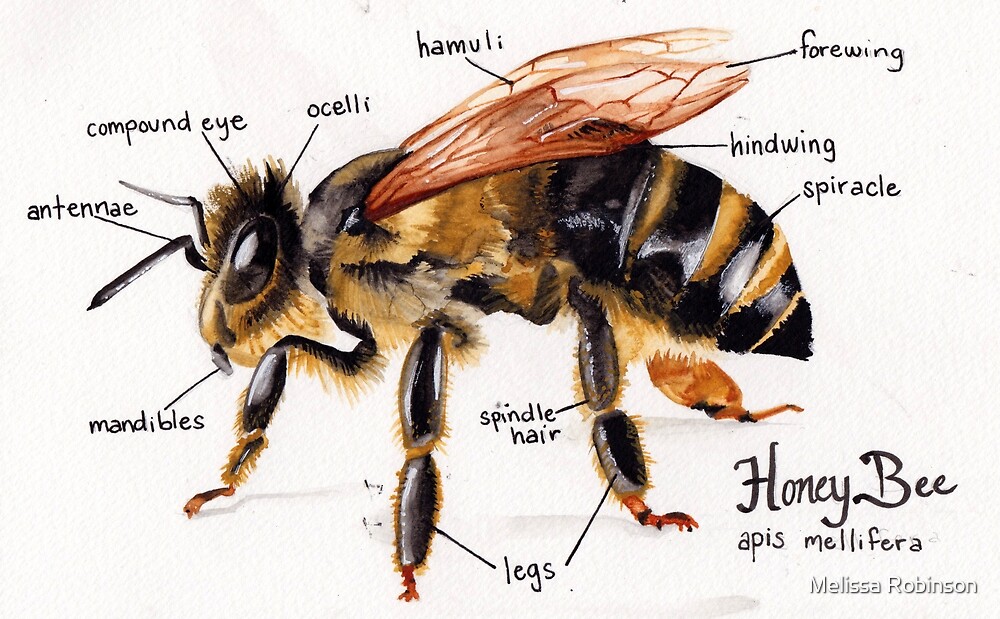
"Honey Bee Anatomy Chart" by Melissa Robinson Redbubble
A bee's body is also covered in lots of fuzzy, branched hair, which collects pollen and helps regulate body temperature. The body also has three sections -- the head, the thorax and the abdomen. The head houses the brain, a collection of about 950,000 neurons. These neurons are specialized, and they communicate with specific neighboring neurons.
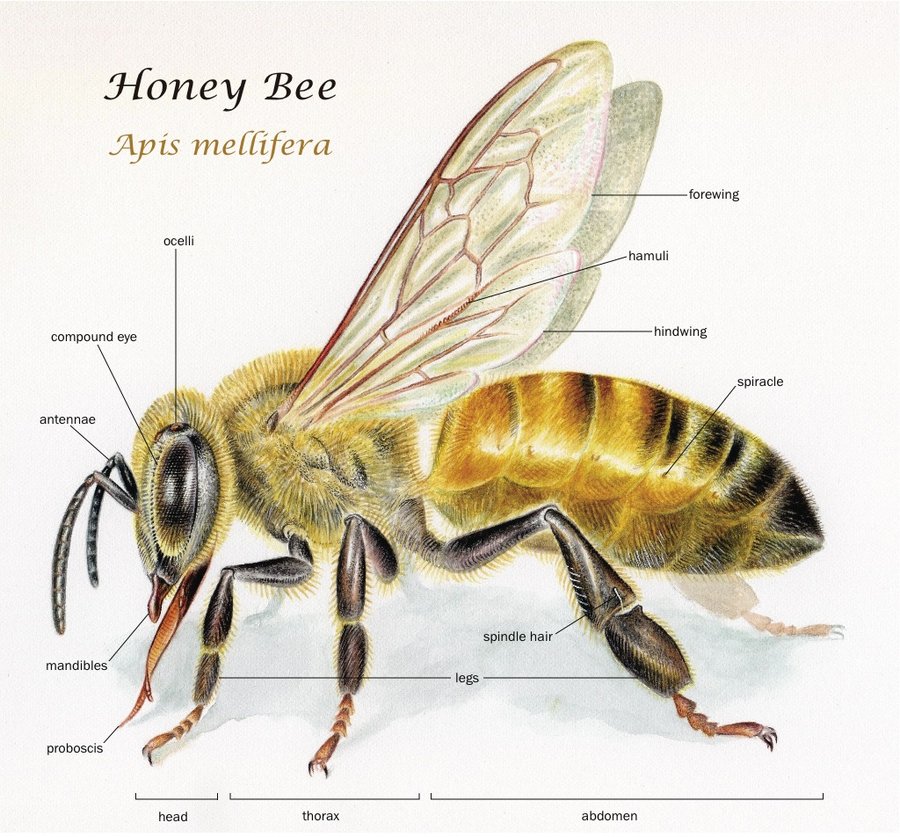
Body parts of a bee. The worker bee.Discover the benefits of honey
The thorax of a bee is an essential part of their anatomy, as it houses many vital organs and systems. One crucial aspect of the thorax is the flight muscles that enable bees to fly quickly and efficiently. These muscles are connected to the wings via tendons, which allow for precise control over wing movement during flight.
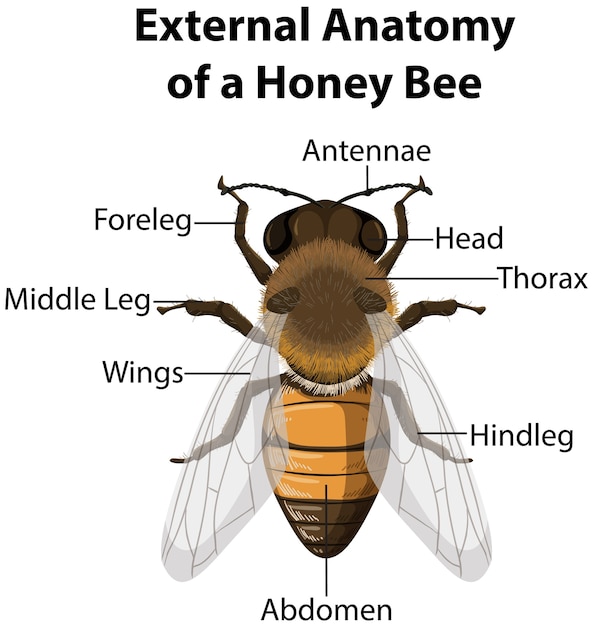
Free Vector External anatomy of a honey bee on white background
Queen Bee Anatomy. Queen bees are the mothers of all bees in a hive. They stay inside the hive and rely on the worker bees to bring them nectar, pollen, and water throughout their lifetime. The queen bee's job is to lay eggs for new generations of worker bees and drones (male honeybees). The queen will lay up to 3,000 eggs per day.

Anatomy of the Bee Leahy Beekeeping
Honey bee anatomy. Zachary Huang 02/20/2021 Leave a Comment on Honey bee anatomy. 1. Head. The head is the center of information gathering. It is here that the visual, gustatory and olfactory inputs are received and processed. Of course, food is also input from here.Important organs on or inside the head: 1. Antennae, 2.
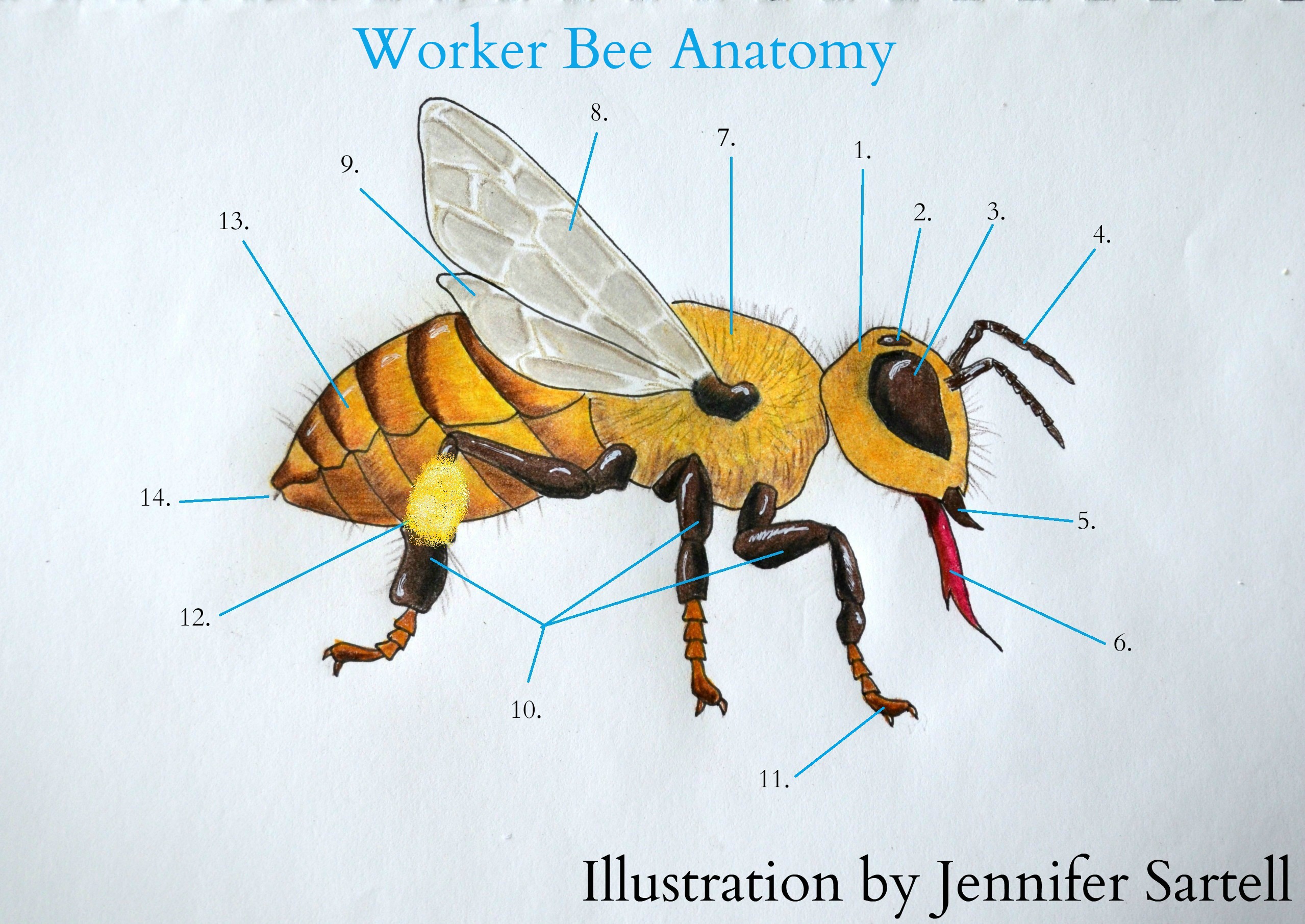
The Anatomy of a Worker Bee Keeping Backyard Bees
The glandular system of a honey bee has four basic functions: (1) internal (within the body) and external (outside the body) communication, (2) food processing, (3) defense and (4) wax production. The glandular system includes a number of glands located throughout the bee's body. These glands are organs composed of clusters of cells that.

Honeybee Characteristics, Habitat, Life Cycle, & Facts Britannica
Bee Anatomy Honey bees are insects and have five characteristics that are common to most insects. They have a hard outer shell called an exoskeleton. They have three main body parts: head, thorax, abdomen. They have a pair of antennae that are attached to their head. They have three pairs of legs used for walking. They have two pairs of wings.

Anatomy Of Bee Educational Labeled Body Structure Scheme Vector Illustration Stock Vector By
Studying honey bee anatomy is a great way to teach students how to analyze anatomical illustrations. Arizona State University's School of Life Sciences provides clear illustrations of both interior and exterior anatomy. Primary grade teachers might focus on the most basic parts, such as head, thorax, and abdomen.
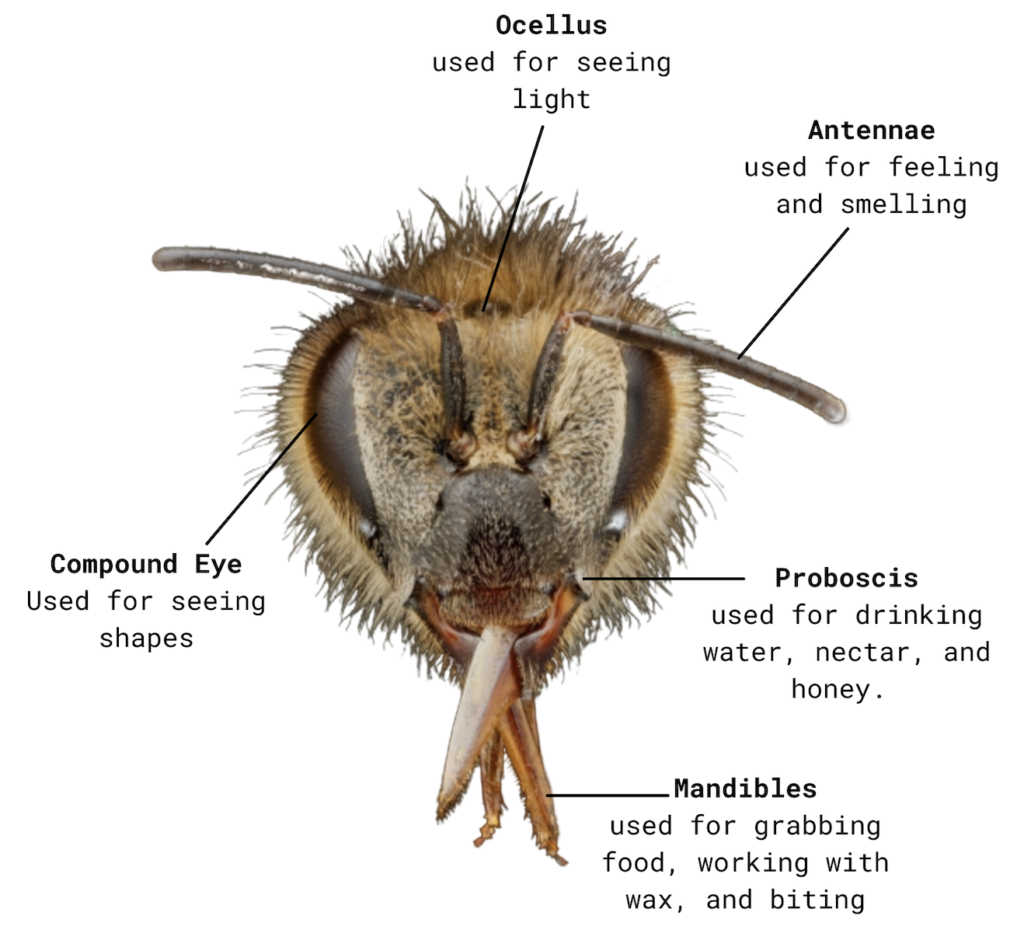
Honey Bee Anatomy Honey Bee Research Centre
1. Antennae. The antennae of a bee are located on each side of the upper portion of the head and are made up of a number of segments. They act as mechanoreceptors and odor receptors. Bees use their antennae to locate food sources, communicate with other bees, and navigate their way back to the hive.
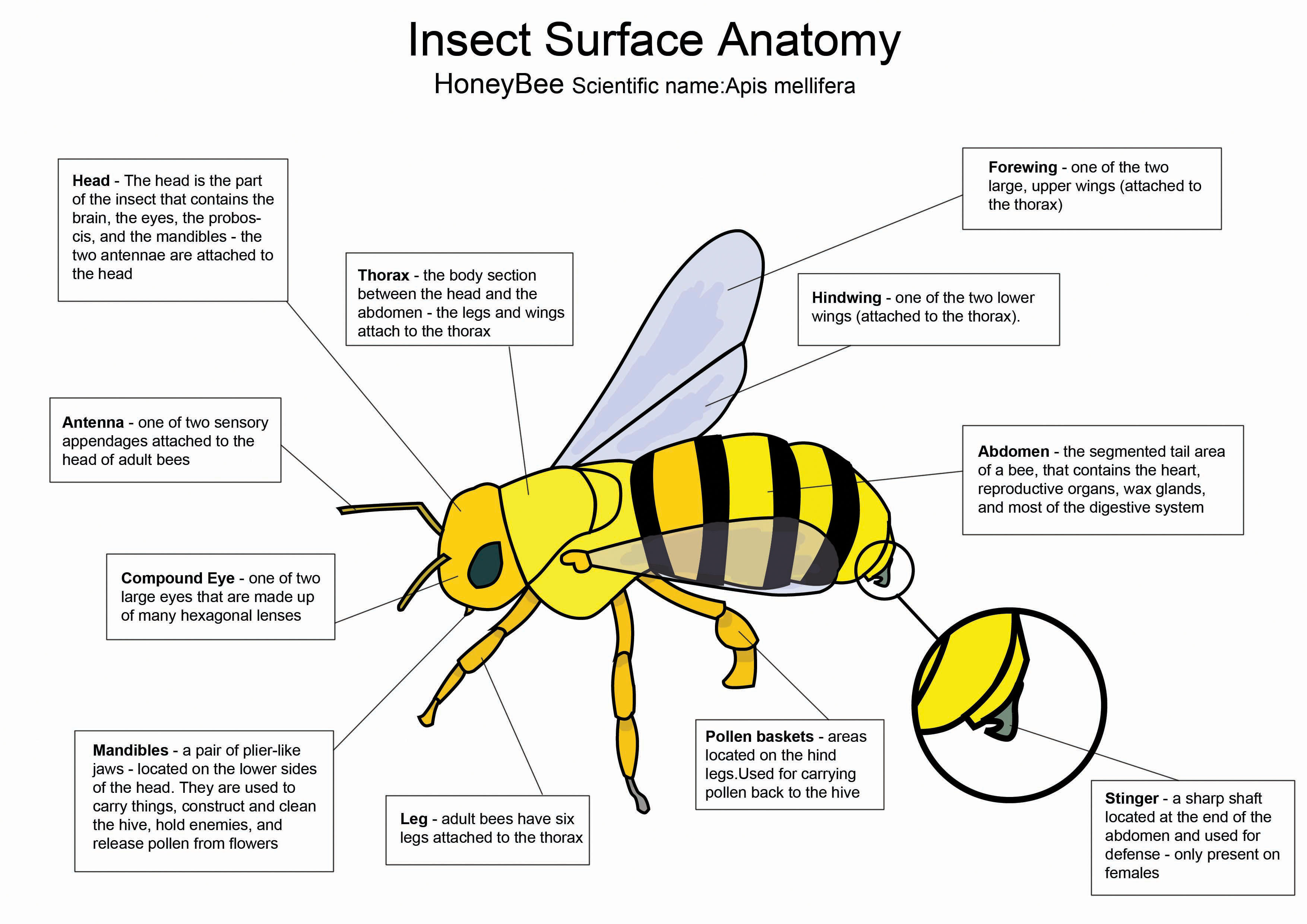
Honey Bee diagram by crazyhobo on DeviantArt
I. Unlocking the Mystery of Bee Anatomy. Bees have long been a source of fascination for scientists and non-scientists alike. Their often-bewildering anatomy has kept us busy uncovering its hidden treasures. The Head: The head is perhaps the most complex region of a bee's body. As with many insects they have antennae atop their head, used to.

a diagram showing the parts of a worker bee
A lot of action takes place within this part of bee anatomy. Containing 3 pair of legs ( total of 6 ) and 2 pair of wings (total of 4) , walking, flying and moving in general is made possible by the structure of the thorax. wings; legs; special structures - pollen basket; Honey Bee Wings. A honey bee has 4 wings ( 2 pair on each side of the.
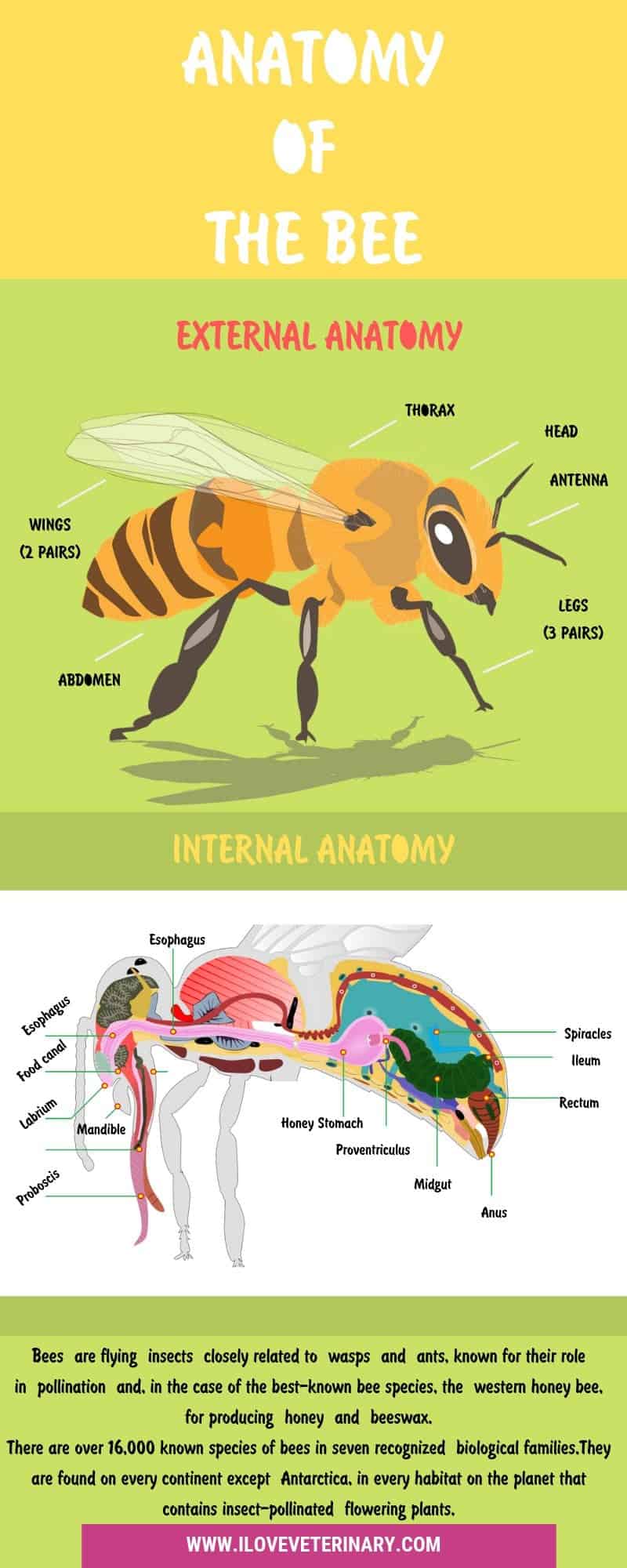
Anatomy of the bee I Love Veterinary
A honey bee is made up of an abdomen, thorax, and head that has two antennae. It also has two pairs of wings and three pairs of legs for movement. Like most insects, bees have a hard outer shell or exoskeleton. Let's take a closer look at the parts of a honey bee. 1.

Parts of a BEE Useful Bee Anatomy with Pictures • 7ESL
As a member of the insect class (Insecta), honey bees share with other insects the following characteristics. Honey bees are segmented in nearly all their bo.
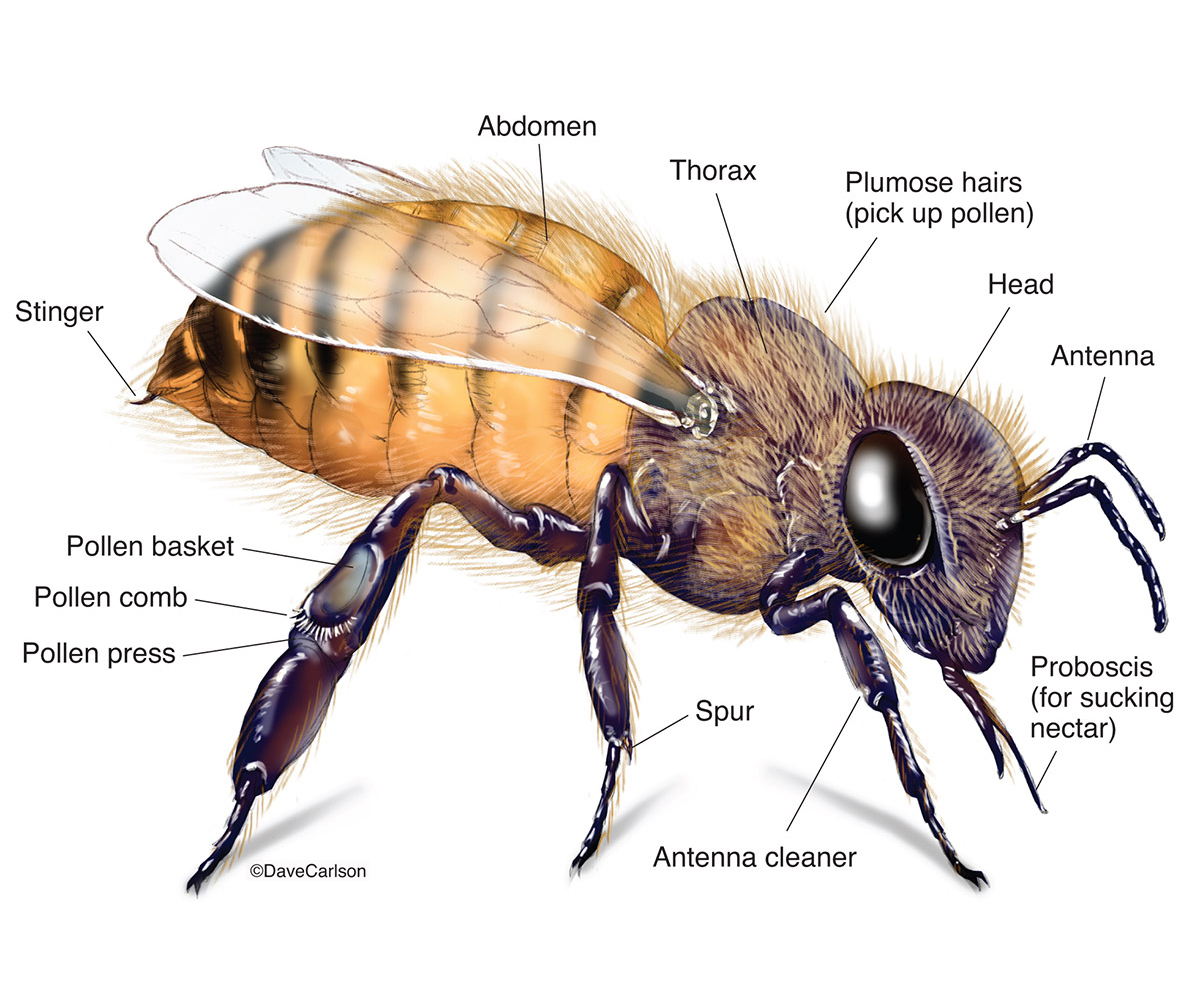
Honeybee Genus Apis Carlson Stock Art
Honey Bee Anatomy. Honey bees have 3 body segments - head, thorax, and abdomen. The head contains the eyes , antennae, and mouthparts. Eyes: Honey bees have 5 eyes. 2 compound eyes used for seeing shapes, and 3 small eyes at the top of the head used for seeing light. Honey bees see slightly differently than humans do.

Honey Bee Anatomy Honey Bees The sweetest pollinators on Earth
Honey bee anatomy features five unique characteristics to help tell them apart from other insects. Exoskeleton - an outer shell that keeps the body protected. 3 primary body parts - the head, thorax, and abdomen are easy to distinguish from other body parts. 2 large antennae - both attached to their head.